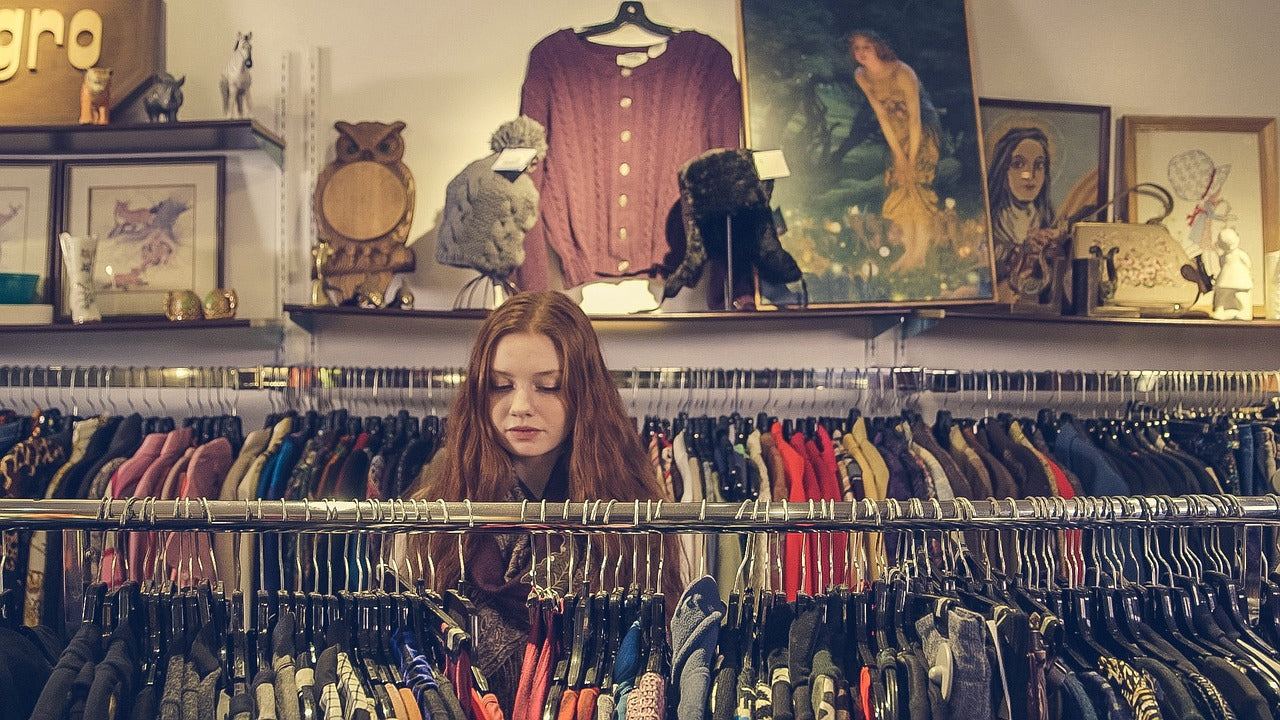
It’s National Op Shop Week! I love shopping at Op Shops and secondhand stores for so many reasons. Finding a ‘treasure’ at a bargain price is absolutely addictive! Buying secondhand is also more sustainable, often supports a charity and it gives you a chance to step away from the ‘consume at all cost’ message you’re confronted with in just about every shopping centre.
Here are my top ten tips for shopping at secondhand stores:
- Take your time. This one is easier said than done when you have little people in tow but when you rush it’s easy to miss things, particularly in op shops where the racks are jam packed and can be disorganized.
- Visit often. New stock is put out almost constantly so popping in frequently gives you the best chance to score.
- If you’re not sure about something, take it with you as you browse the store. If you put it back and then change your mind and decide you want it, someone else might have grabbed it.
- Buy it when you see it but set a limit on how far in advance you can stash something. For example, if I really like a jacket but it’s too big for my son, I try to figure out how long it will take for him to grow into it. If it’s less than 12 months, I’ll take it and pop it in his wardrobe (not packed away because I am disorganized and will almost certainly forget that I have it). If you have a better system (boxes labelled with sizes & seasons and the storage space to keep them tidy), you can probably allow a longer ‘stash’ time, as long as you remember what you have!
- Check the size up and the size down. In Australia there’s no set standard for sizing, and a proper sizing survey hasn’t been done for a long time so it’s often worth checking the other size sections because you might find an anomaly that is the perfect fit, despite the number on the tag.
- If at all possible, try things on before you buy them. Not all shops offer return or exchange for items that don’t fit.
- Check carefully for missing buttons, stiff zippers, stains and seams coming apart. If you know that something will need dry-cleaning or alterations be honest with yourself about whether you have the time or the energy to do the repairs or take them to someone.
- Look for quality fabrics and finishes. You can usually feel how good a fabric is just by touch but also look for the fibre content, weight and obvious flaws like pilling. Check how neat the stitching looks, how well the seams are finished on the inside of the garment and whether or not the garment lies flat on a table (this can show warped seams or stretched fabric).
- Take cash. Most places these days have EFTPOS, but smaller independent stores are often cash only.
- Be open minded. Often you’ll walk in looking for one thing and come out with something completely different, which can be frustrating but also part of the fun!



